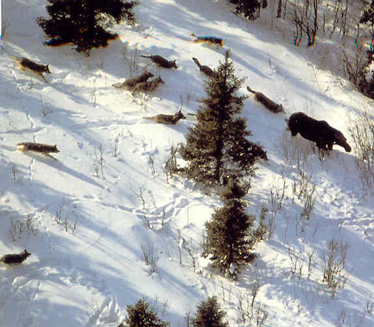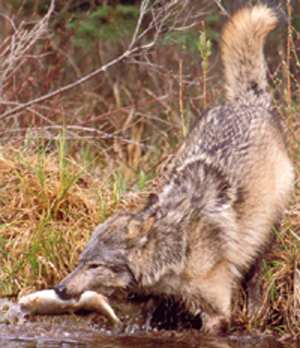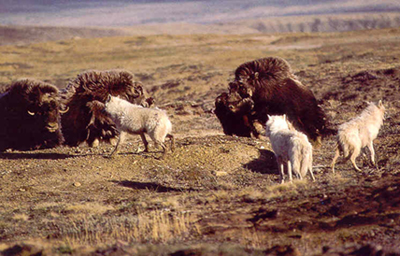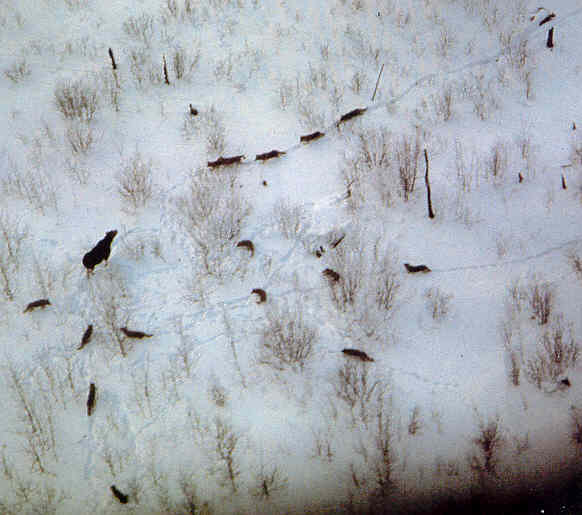Hunting For Prey
|
This is the picture of a wolf pack hunting, see how they
|

There in this picture you can see some wolves hunting buffalo.
Have you noticed that there are only three wolves to be seen?
Wolves have no problem hunting things five times bigger than them.
As you see.
I just said that wolves have no problem hunting animals bigger than them, but what I didn't say was that they also like hunting smaller things to!
In this picture below you see a wolf caught a fish. Now don't you think a
wolf has to be pretty fast in order to catch a fish!?
Wolves normally go for bigger animals, not fish, but sometimes a wolf
will be on it's own and just need a "snack". I'm fasinated by
wolves and always will be. I hope to show you how unique wolves are!
Wolves are carnivores who hunt in packs. Wolves normally prey on
large hoofed animals, such as elk, deer caribou, moose, and sheep.
The hunt is normally a quite pursuit of the prey by the entire pack
based on the prey's scent. The wolves will surround the animal and
make an attempt to kill it by breaking it's neck or by biting the
jugular, (which is the main vain that carries nonoxygenated back to the
heart) which will give the animal a quick death, the wolves does
this so there is less struggle. More often then not the prey will
alude the wolves by picking up the scent of the wolves or by running
away. Larger animals like a moose will fight the pack, and eventually
the wolves will give up for an easier prey.
(which is the main vain that carries nonoxygenated back to the
heart) which will give the animal a quick death, the wolves does
this so there is less struggle. More often then not the prey will
alude the wolves by picking up the scent of the wolves or by running
away. Larger animals like a moose will fight the pack, and eventually
the wolves will give up for an easier prey.
Wolves can go for long periods at a time without eating, as long as two weeks, and in the fall ans winter, when game is harder to to locate and take down the pack usually must go for these long periods. In the summer and spring, there are many small, weak baby mammals to prey upon, but in the fall ans winter, the pack must rely on the old and sick animals that are easier to kill. Wolves compensate for these long periods of starvation by being able to eat as much as 20 pounds at one meal.

Wolves detect prey by three primary means: Scent(most common), Tracking and Chance encounters.
Wolves also have four primary means of catching a prey, they are: 1st the Stalk, then the encounter, then the rush, and last the chase.As you probably read earlier wolves are skilled hunters, but they prefer to take down the young, the very old, the weak, or the disease of its prey species. Inevitably, these disadvantaged animals are the easiest to catch.
In this picture you see an example of how smart wolves are. Look how five wolves come from the front to distract the prey, and five from the back to trap the prey, and the six on the side are hidden by the bushes. When the six come out they will attack the prey and all is lost for the animal.
